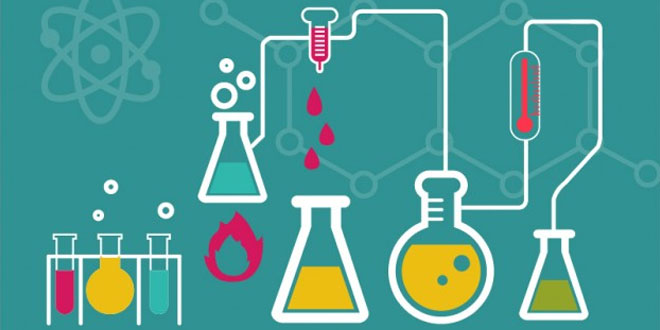Question: Write the Characteristics of a chemical change.
Answer: Following are the characteristics of a chemical change:
- Change in energy: Some chemical changes may give out heat, while some may absorb heat from their surroundings. A change or reaction in which heat is released is called an exothermic reaction. For example – Carbon + Oxygen → Carbon dioxide + Heat. A change or reaction in which heat is absorbed from the surroundings is called an endothermic reaction. For example – Carbon + Sulphur + heat → Carbon disulphide
- Change in colour: The colour of the product may differ from that of the reactant for example – copper sulphate is blue in colour, but after reacting with iron, the product formed (iron sulphide) is of green colour. Iron + Copper Sulphate (blue) → Iron Sulphide (Green) + Copper
- Evolution of gas: Some chemical changes also produce gases. These gases are actually the products formed in the gaseous state. Generally, the gases produced can be Carbon dioxide, hydrogen, ammonia etc. The presence of carbon dioxide can be confirmed as it turns lime water milky, and the presence of hydrogen can be confirmed as it burns with a pop sound when a burning splint is brought near it.
- Formation of precipitate: In some chemical changes, the product formed separates from the solution and forms a different mass or layer. The insoluble solid is called a precipitate. For example, in a reaction between copper sulphate and hydrogen sulphide, copper sulphide and sulphuric acid are formed. The copper sulphide formed is given out as a precipitate. CuSO4 + H2S → CuS + H2SO4
Question: When will two elements mixed together form a compound?
Answer: Two elements on being mixed together will form a compound.
For example: Iron + Sulphur → Iron Sulphate – Fe + S → FeS
Question: Why are the properties of different compounds so different from each other?
Answer: The properties of different compound are different from each other because they are different constituent element. Same constituents are present in different ratios. For example – H2O – water, H2O2 – Hydrogen peroxide.
Question: Why are the most elements not found in the free state of nature?
Answer: Most elements are found in free state in nature because many elements have a great tendency to combine with each other. These elements are therefore, not found in free state in nature. They only occur in combined form as compound.
Question: The process of freezing is an example of physical change even though water and ice have different properties.
Answer: This because the molecular structure is not changed even though their properties are different.
Question: How does soaking of cut pieces of vegetable and fruits reduce the levels of browning?
Answer: The water prevents the air from coming in contact with vegetables and fruits, thus preventing the browning process.
 Class Notes NCERT Solutions for CBSE Students
Class Notes NCERT Solutions for CBSE Students




I like this site. It is very good.